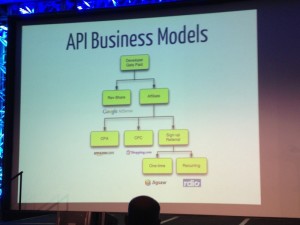August 20th, 2014 by Elma Jane
Loyalty Rewards Program and Gift Card Processing
GIFT CARD PROGRAMS
You have received gift cards, given them as gifts, and now you want to offer them for your business. The benefits for your customers are obvious, they are easy to buy, use, and offer your customers an incredible variety of choices. As a business owner, plastic gift cards offer increased security from fraud, the ability to track sales and buying trends, and gauge the effectiveness of your promotions. Electronic gift card processing increases revenue and attracts new customers. They also reduce labor associated with traditional paper gift certificates. National Transaction offers customized gift card processing merchant services tailored to your gift card processing needs. Gift cards provide added incentives to your customers and employees. Because no cash back required, Returns stay on the card and never leave your business.
LOYALTY CARD PROGRAMS
What are your best customers worth? Reward them and keep them coming back. NTC’s programs give you the information you need to maximize the impact of every marketing dollar spent by targeting your marketing efforts toward your current customers. Whether you are implementing a new customer loyalty program or trying to make your existing program more successful. NTC will work with you to create a system that is right for you and your customers. Let us assist you in all aspects of your reward program: Design, implementation and follow through.
Posted in Gift & Loyalty Card Processing, Mail Order Telephone Order Tagged with: Brand, card, cash back, customers, Electronic gift card, fraud, gift Card, Gift Card Processing, gift certificates, Loyalty Card, loyalty program, merchant, merchant services, program, rewards, Rewards Program, sales, Security
August 13th, 2014 by Elma Jane
No sales manager wants to hear that his or her team is losing sales. For some companies, customers jump ship or don’t give them a chance at all, because of a negative experience with an individual sales representative. The outcome of a bad in-person sales experience is more dramatic than just a delay in the sales cycle. In fact, according to a recent survey and research, 70 percent of marketing and sales professionals said a bad sales call results in a loss of revenue and 70 percent noted that it can take months or even years, to recover from it, but for many organizations, lost revenue doesn’t just occur because of bad sales calls. Often, small inefficiencies in the sales process add up to a lot of wasted time and by extension, wasted opportunities.
Sales teams spend 30 to 50 percent of their time not selling, they’re calling, chasing and waiting, trying to get the customer to agree to an appointment. When you change this behavior and drive it down, sales go way up.
How can sales managers solve these issues that stand in the way of growth? Gathering customer feedback may seem like the obvious answer, but before you do, try seeking internal feedback from your team about where they’re struggling.Managers should look at underperforming sales reps and inquire about the obstacles that are keeping them from being successful, is it training or the enablement material? Can they find the right material for each stage of the sales cycle? It’s important that managers understand both the positive and negative patterns so they can provide critical feedback to marketing on content effectiveness and help salespeople orchestrate better conversations.
Another effective strategy for collecting useful feedback is to ask employees what tactics are helping them to succeed. Ask them for the single best thing they’re doing relating to sales. Questions that ask for just one thing generate the best results. It’s easy to act on those answers and it’s valuable and engaging to share them transparently with the rest of the team. Once you’ve asked your team about their process and figured out what’s working, there’s one last question you need to ask yourself as a sales manager, what do you need to stop doing as an organization to free up more time for the tactics that actually work?
If your team is wasting a lot of time on nonselling activity, the best thing to do is eliminate that dead time of waiting around for the phone to ring. Sales teams confuse making 70 phone calls to prospective clients and leaving messages with selling. That activity is not selling. Get prospects engaged in a productive conversation the first time you pick up the phone or meet them by finding out what the customer’s problem is, and if your product or service can solve it.
Posted in Uncategorized Tagged with: companies, customers, marketing, organizations, product, sales, sales calls, sales process, Sales teams, service
July 15th, 2014 by Elma Jane
There is a big difference between finishing first and second in sales. First-place finishers make the sale and pocket the money, while second-place finishers leave empty-handed. Winners sell radically differently than second-place finishers. Winners exhibit a specific combination of behaviors to achieve better outcomes than other sellers. The way winners sell can be characterized by specific behaviors at three different levels.
Specific behaviors at three different levels and how sales professionals can incorporate them into their current strategies.
First Level – CONNECT
Winners connect in two ways: 1. They are more effective at connecting the dots between customer needs and their company’s products and services as solutions. 2. Winners connect with people. Buyers believe that winners both listened to them and connected with them personally more often than the rest. Connecting with people and connecting the dots sounds a lot like relationship and solution selling to us. Connecting with buyers on both levels is still absolutely critical to winning the sale.
Second Level – CONVINCE Winners convince buyers that they can achieve maximum return, that the risks are acceptable and that the seller is the best choice among all options. Many sellers are not good at convincing buyers, and large portions of sellers aren’t even willing to convince. When they can and do, they win more sales.
Third Level – COLLABORATE Winners are collaborative in how they work and what they do. They are perceived by buyers to be responsive, proactive and easy to buy from, and buyers believe winners actually collaborate with them during the buying process by working with them to achieve mutual goals. Buyers perceived collaborative sellers to be integral to their success.
Those who apply these three levels as a systematic approach to selling and apply it well not only see themselves in the winners circle more often, but also maximize client loyalty and generate the most referrals.
In addition to determining the three levels of sales, also studied those factors from the buyer’s perspective, that most separated winners from second-place finishers. They discovered that out of 42 factors, the one that most separated winners from second-place finishers was this: Educated me with new ideas and perspectives. By educating buyers with ideas, winners share concepts and insights that can have a major impact on the buyer’s goals. This is called opportunity insight. Buyers typically don’t know alternative opportunities exist until sellers take the time to share them, but once they do, it influences the buyer’s agenda for action, that doesn’t mean sellers should just throw ideas out left and right and see if something sticks, but that they essentially need to transfer their drive, passion and energy for the possibilities to their buyers’ minds. While there has been a shift in the way buyers buy, the fundamentals that have been true for decades are still necessary. However, sticking to the basics isn’t enough to win sales. To win today, you must also focus on differentiation, ROI and collaboration. Do so while leveraging ideas and you’ll win significantly more often.
Posted in Uncategorized Tagged with: buyers, sales, sellers
June 19th, 2014 by Elma Jane
Analytics versus Intuition:
Human behavior plays a big role in sales forecasting. We have a number to shoot for, and often we try to figure out ways to make it, regardless of the soundness of our reasoning. So we assume deals are going to close even if it means we have to ignore telltale signs of trouble until its too late. Using modeling and analytics to evaluate your company’s position in each deal. The model could tell you the warning signs, because analytics would reveal how closely any deal fit with the model’s known history of success. As with weather forecasting, there would be no value judgement, just a probability of rain. Managers would still need to apply their reasoning, but armed with this kind of knowledge, sales people up and down the organization could evaluate scenarios constructed to make their deals match up with the ideal.
Cloudy With 30 Percent Chance Of Sale
Take a more scientific approach. The sales process stage is one of the variables in the model that the company uses to evaluate deals. More importantly, the busisness applies analytics to the deal data rather than expecting managers to review all of it. Analytics would have no trouble spotting the incomplete deal stage and would downgrade the forecast appropriately. A report then would show the variance between the forecast and the model. If you apply this logic to every deal in the forecast, then you have a range of probabilities similar to those weather people rely on to tell you about Saturday’s conditions. More importantly and unlike a weather report, the forecast is also prescriptive because it shows you how you can improve it. Get that meeting with the decision maker if you want to close the deal. Everyone complains about the weather but no one does anything about it. If you’re tired of complaints about sales forecast accuracy, consider building an accurate model and applying analytics. It works for the weather.
Posted in Best Practices for Merchants Tagged with: analytics, data, deals, sales
June 19th, 2014 by Elma Jane
API Software Inc. has created an application ISOs can use to help merchants tabulate the best payment services deals. The Square Deal Pro app for the merchant services industry enables sales reps to compare their company’s rates to those of Square, PayPal, Stripe and other payments aggregators. Essentially, the application takes the mathematics burden off of the merchant and helps an ISO or agent compare bundled pricing with interchange-plus pricing.
Frank Haggar, a software developer, started asking merchants why they chose a certain provider and they just said the pricing was simpler. It might be more expensive, but it was easier for them to understand. That moved to develop Square Deal Pro. It’s a software that salespeople can have right on their phones and it makes a comparison and is easy to understand. Square Deal Pro, which operates on iPhones, Android devices and Windows phones, was established as a vendor-neutral tool that is also available for merchants to download if they were inclined to want to crunch numbers themselves. Service providers pay for the application and all of its sales features, but a free version for price comparisons only is available to merchants.
Merchants are experts in what they know how to do and they may not want something that includes math distracting them from that, but the sales rep can do it for them and use it along the lines of a calculator helping someone figure out mortgage rates. ISOs have various tools at their disposal and lock in key information in their brains to prepare for sales presentations, but most will likely find Square Deal Pro a valuable addition. Something that takes complicated pricing schemes and factors it all into an easy interface that puts out a clear comparison that is valuable, certainly out in the field.
API Software has to deliver something difficult or impossible to copy because that would set this permanently apart as opposed to being a lead to other similar products in the market. An ISO can change rates or make adjustments for a client if the numbers show that another provider is offering a less expensive option, but the numbers in the app don’t lie. The app will show how a bundled rate can work in your favor, such as if you are selling Girl Scouts cookies at $3 a box. Then use Square all day long, but an ISO can compare how his product works compared to others and the app can show, that at a certain time, it might be beneficial to switch over.
Square Deal Pro takes into account factors other than interchange rates, including merchant volume, average ticket price and whether transactions are keyed or swiped or both. All of those things determine where you fit in on the diagram of how your rate should be structured. There is a lot of analysis on minimal focal points. The application may also help defuse potential problems with merchants who sometimes feel their sales rep was not providing a fair assessment of pricing structure or comparisons.
As for the application’s name, Haggar doesn’t want any confusion over whether this might be a new Square product.
Posted in Best Practices for Merchants Tagged with: account, aggregators, Android, assessment, bundled pricing, developer, devices, interchange, interchange rates, interchange-plus pricing, iPhones, ISOs, market, merchant services, merchant volume, Merchant's, mortgage rates, payment, PayPal, phones, pricing, Pro app, products, provider, Rates, sales, Service providers, software, Square, Square Deal Pro app, Stripe, transactions, Windows phones
June 17th, 2014 by Elma Jane
Sales is like acting: You may have something great to offer, but no matter how hard you try, some people just aren’t going to like it. Just as actors don’t nail every audition, a salesperson won’t close every deal or chase down every lead. Dealing with this kind of rejection day after day can really wear your sales team down if they don’t have the right mindset.
One of the most crucial skills you can help your sales team develop is the ability to effectively manage adversity and overcome rejection through the power of positive thinking. With rare exceptions, a salesperson faces more losses than wins. As a sales team leader, you’ll need to find a way to keep your group motivated and focused on overcoming the many obstacles they’ll face in the course of cold calling and pitching proposals.
Inspiring optimism in your sales team isn’t always easy, but you can do it with the right techniques.
Encourage team members to share success stories. Gather the team and have all sales people share stories about how they overcame obstacles and reversed setbacks. By learning how other team members succeeded after initial adversity, sales professionals can learn to be more optimistic in their own thoughts. You can also review one of the most impressive wins your team had for the quarter and outline what enabled that sales representative to win the deal. This is a great way to build confidence in the company’s product and service, and do some team building at the same time.
We’re not 100 percent in control of our circumstances, but we can control the attitude with which we confront them. A prospect can tell in just a few minutes if you are confident and passionate about what you are selling and if you are prepared. Your confidence often breeds confidence in the prospect, which more often than not leads to winning the sale. By choosing to see the glass as half full, we can position ourselves for greater success.
Meet one-on-one with your sales staff. It’s important that your sales team recognizes the direct connection between their attitudes and their results. As a leader, you can help by assessing individual performance and talking through how each person’s perceptions affect his or her results. Different techniques will appeal to different individuals, so it’s best to take a personalized approach.
Retrain worn-down employees. Constant rejection when making a few dozen calls a day can take its toll on even the most optimistic person. The first sign that sales representatives are struggling comes when they claim that the product is too expensive or does not provide the functionality customers are looking for. Those sales people then expect rejection from every additional call. This may mean they require more training on what differentiates the product from the competition. If this is the case, it’s best to get those representatives off the phones and into a training session, where you can fine-tune their approaches and rebuild confidence.
Posted in Uncategorized Tagged with: customer, lead, product, proposals, sales, Sales Representatives, sales team, salesperson, training
May 15th, 2014 by Elma Jane
Selling merchant accounts can be a very profitable venture. It’s not an easy task by any means. It takes hours of work, a strong knowledge of the payment processing industry, dedication and the ability to be told NO many times and still keeping at it. It is often first done successfully as a part time job, because it takes time to build up a residual stream large enough to live off of.
More that 50% of all people that start out to sell merchant accounts never make it and maybe 10% are profitable enough to stick with it. Once the person has found the right company like National Transaction to work with and the ability to sell merchant accounts, they can make a very good living from it.
Statistically, an average merchant account will give a sales agent about $30/month to $11,000/month in residual income. Sandler one of our Sales Rep. who’s into insurance company, had a fall out with his brother came in the office did some orientation and had all the support and tools that he needs, did some phone calls and in a month landed a good deal!!! 11,000/monthly residual for Sandler.
If a sales agent can sign 10 accounts per month, they will be making $3600 per month at the end of the first year or $36,000 per year. At the end of the second year $72,000 per year and at the end of the third year $108,000 per year which is a very decent salary. (Take note that the above average statistics may vary). It really depends on what type or existing portfolio a Sales Rep have or the net volume of the merchant accounts they closed in. As long as the agent keeps signing accounts their income will keep growing. But 10 accounts per month is not an easy task especially for someone new to the merchant services industry. Also, overtime attrition shows up and the average number of accounts a person can setup goes down. But with the help of National Transaction’s Support Sales Team, tools and leads you can make it.
With National Transaction, there’s a lot of Sales Representatives from different walks of life who became successful in this field. From a couple who teamed up and build their own portfolio, to a plain housewife, a teacher, ordinary people who doesn’t know anything about merchant accounts selling or not really into sales marketing, but made it big.
Sales Marketing is not for everybody, but if the company like NTC is giving you all the tools and the support that you need to make it, like orientation, classroom training twice a week, even helping you out close a deal through our Sales Support Team then that’s Awesome!
National Transaction give upfront commissions (NTC pay within a couple of business days), not only that, NTC do High Risk credit card processing services, not all merchant service provider does the same thing. National Transaction provides you prequalified leads and appointment set up, you can also call our 24/7 customer service if you need any help. You do not have to purchase a unit or invest in provided leads or anything because NTC wants all their Sales Representative to succeed.
Also in this field you can work from home or be at the office at your own flexible time. As long as you have set your own quota for the day. If you want to be a successful Sales Representative and earn 60,000 or more monthly residual then sign up with National Transaction and make that dream of yours come true, just like our existing Sales Representatives.
Posted in nationaltransaction.com Tagged with: customer service, insurance, insurance company, merchant, merchant accounts, National Transaction, payment industry, payment processing industry, prequalified, sales, Sales Marketing, Sales Representatives
May 12th, 2014 by Elma Jane
Let’s talk about success stories of the people who worked with National Transaction and made it big in this field. One great story that we have is about Big Daddy. I named this guy Big Daddy, because of the great success that he made in this industry. Big Daddy was a Physical fitness trainer with an outgoing personality before he joined National Transaction. He gained knowledge about the card industry and build a good working relationship with NTC’s President Mr. M. Together, they secure a relationship with several associations and negotiated a deal. Now, they were able to partner with a high risk account. While these associations continue to profit from the relationship, Big Daddy took 3 years off. These associations assist merchants become more profitable and is the leading global advocate for travel agents, the travel industry and the traveling public, also the world’s largest association of travel professionals. National Transaction has been ASTA member and a partner since then for almost 10 years now. As Big Daddy broaden his knowledge and skills about the industry, he started to build his own portfolio which gave him the ability to form his residual income. As of this date, he averages $30,000 monthly with National Transaction, while running his own business. If Big Daddy made it, then other Sales Representatives can make it bigger too. With the right company to work with like National Transaction, right tools and full support from our Team and Customer Service your on the right track, so why not make a move??? Start building your portfolio and give it a shot or if you already have one, work it out. You will never know. In all labor there is a profit.
Posted in nationaltransaction.com Tagged with: account, ASTA, card, card industry, customer service, high risk account, Merchant's, National Transaction, residual, residual income, sales, travel, travel agents
January 2nd, 2014 by Elma Jane
Online consumers generate an avalanche of data.Companies such as Amazon and Target have used Big Data for years. It’s the secret behind their highly personalized product recommendations and email promotions.
The good news is that smaller companies can use the power of Big Data in their businesses, too. But just because you can gather tons of data, doesn’t mean you should. For most small-to-midsize businesses, trying to harness Big Data can sometimes do more harm than good. It can slow down your website and cost time and money.
To make effective data-driven decisions in your business, control the types of information you collect. Focus only on the metrics that truly affect conversion rates and ignore the ones that don’t have much of an impact.
Tracking raw ad impressions regardless of whether they yield clicks or conversions is an example of monitoring low-impact data. The same thing goes for blindly monitoring Facebook Likes or Klout scores. Stop wasting resources on metrics like these. Devote your efforts on the data points that count.
Here are the most important ones for e-commerce merchants.
Number of Site Visitors and Where They’re Coming From
Online marketing is rarely cheap and quick. You have to determine the best strategies to spend resources on. There are several free and easy-to-use tools that can provide this information.
Google Analytics is an excellent tool that gives you insights on your traffic and traffic sources. To go deeper, such as which specific newsletter or which Facebook update sent visitors to your site, you can create Custom Campaigns and add special URL tags for each campaign. This lets you drill down on the specific source for your referral traffic.
Also, set up your online campaigns to make it easy to monitor. For example, having a different landing page for each guest post will allow you to quickly see which ones are sending traffic. Or, for social media, you can publish updates using a simple tool like Buffer so you monitor clicks each from each post.
Sales and Beyond
Tracking your sales is key. Aside from looking at your basic sales numbers, compute your average order value and compare it with your marketing and advertising budget. Viewing how much you’re spending on each customer versus how much they’re spending on you will help create the right budget for customer acquisition and retention.
Beyond gross sales, monitor item returns to obtain the net sales volume. Determine also the reasons behind refunds and exchanges to improve your merchandise.
Also, track sales from promotional offers, to know what promos or discounts to provide in the future. If, for example, you used a loss leader to attract customers into your store, closely monitor overall sales based on that offer to see if it generated profits.
Knowing this sales data will enable you to send out tailored promotions to users. And if you can combine those insights with other data such as the time they usually buy from you or what device they use you’ll be able to optimize your campaigns for maximum conversions.
What Visitors Are Doing on your Site
Tracking the pages that users viewed, the actions they took, and their exit points can give you tremendous insights about your site and your visitors. Analyzing these things will tell you which aspects of your site need improvement.
For example, say you discovered that while shoppers are clicking the “add to cart” button, most leave before they provide their credit card details. This could mean that there’s something wrong with your checkout page. Perhaps it’s confusing or you need a stronger guarantee. Regardless, you won’t be able to identify the problem if you don’t track what’s going on.
How you track user behavior will depend on what you want to measure. If you want to track your exit traffic, for example, to add outbound link-tracker code to your website. For WordPress sites, this can easily be done using the Ultimate Google Analytics plugin.
On the other hand, if you want to track how users react to specific site elements such as buttons, text size, forms, and other key elements use heat maps that give you a visual representation of user behavior. Crazy Egg offers a solution for this. It enables you to see how people are behaving on each page.
Posted in e-commerce & m-commerce, Electronic Payments, Internet Payment Gateway Tagged with: acquisition, Amazon, analytics, big data, campaigns, conversion, credit-card, data, data-driven, e-commerce, email, exchanges, Facebook, google, insights, online, personalized, refunds, resources, sales, target, wordpress
December 19th, 2013 by Elma Jane
10 Great Ecommerce & Mcommerce Ideas
Address Commonly-asked Questions
Instead of hiding commonly asked questions on an FAQ page somewhere on your site, display these answers in plain sight. Include your service agreement on every page, and provide frequent updates on orders in the mail, because one of the quickest ways to lose shoppers and sales is to make it difficult for them to do business with you.
Connect with Pinterest Influencers
Connect with the Pinterest influencers…accounts or boards with large followings…that relate to your product category. Ask for a pin here and there for a product you believe they would like. You’ll get large amounts of traffic, sales, and repins from their large followings. This method is repeatable and much quicker and cheaper than building a large following yourself.
Don’t Forget Comparison Shopping Engines
You’ve got a great ecommerce website. But is it hard to get traffic? Comparison shopping engines (CSEs)…like Google Shopping, Shopzilla, NexTag, Pronto, and Bing…deliver millions of shoppers to product pages every day. You list your items on the CSEs where purchase-ready shoppers will see them and click through to your site to complete the transaction. CSEs typically have a pay-per-click pricing model, and many merchants find it’s worth the cost.
Emphasize Product Photography
Whether you use high-quality renderings or actual product photography, make sure you take the time to present your products in the best possible manner. With the proliferation of product and photo sharing sites like Pinterest, The Fancy, Instagram, and OpenSky, having a beautiful product shot is imperative. Lifestyle shots of your product in use could also significantly increase conversion rates.
Make Research Easy for Prospective Buyers
Research (for buying decisions) is a massive resource cost to businesses around the world. It is also a primary reason for lost deals. Were you to provide comprehensive information that was easy to find and on which a buying decision can be made, then your close rate would substantially improve. Add to this, an easy purchasing process and, rather than scouring the web, a buyer would see your site as a preferred source.
Mimic the Brick-and-mortar Experience
Regardless of what channel they may be using to shop, online consumers are demanding the quality of the brick-and-mortar experience. They want to zoom in on a product, rotate it, change its colors…in short, they want to interact with the item as though they were physically in the same room with it. Retailers with rich interactive media that can offer this in omnichannel have a significant competitive advantage during the holiday season and can convert at rates of 30 percent higher than those that don’t.
Offer Support via Social Media
Nielson research discovered that in 2012 one-third of social media users prefer to contact a company via social media than by phone. On your support pages, provide links to your social media profiles. Set up notifications in the social media accounts so you know when someone contacts you. This way you provide timely customer support to those who want it…in the way they want it.
Stay Ahead of the Curve
“It doesn’t take a lot of time for cutting-edge to become old hat. Keep researching to be aware of the latest tools and technology. If you stay still, you will find that your competitors will quickly surpass you.
Take the ‘E’ out of ‘Ecommerce’
Retailers need to realize that the lines of commerce have been, as John Donahoe, CEO of eBay, said, obliterated. It’s no longer a world of online and offline commerce. It’s just commerce. Retailers are competing on a global scale with everyone, everywhere. You need to give shoppers a compelling reason to buy from you. Find a way to differentiate and make sure you can grab shoppers attention and keep them coming back.
Think Like a Shopper
Keep your site’s design simple and clean, make calls-to-action clear, and focus on the product. Go through the flows of your site: search, browse, and buy a product, or have a friend do it and watch him without helping. Pay attention to areas where anything is confusing, doesn’t work the way it should, or takes too many steps. Then make adjustments.
Posted in Credit card Processing, e-commerce & m-commerce, Electronic Payments, Internet Payment Gateway, Mobile Payments Tagged with: brick and mortar, buying, channel, consumers, conversion, convert, customer support, e-commerce, ecommerce, interactive, m-commerce, mcommerce, media, omnichannel, online, orders, photo, product, profile, purchasing, retailers, sales, shopping, site, social media, transaction









